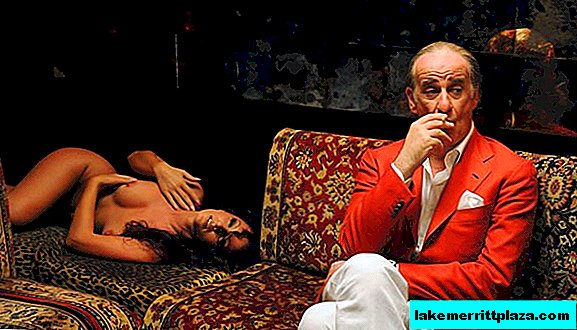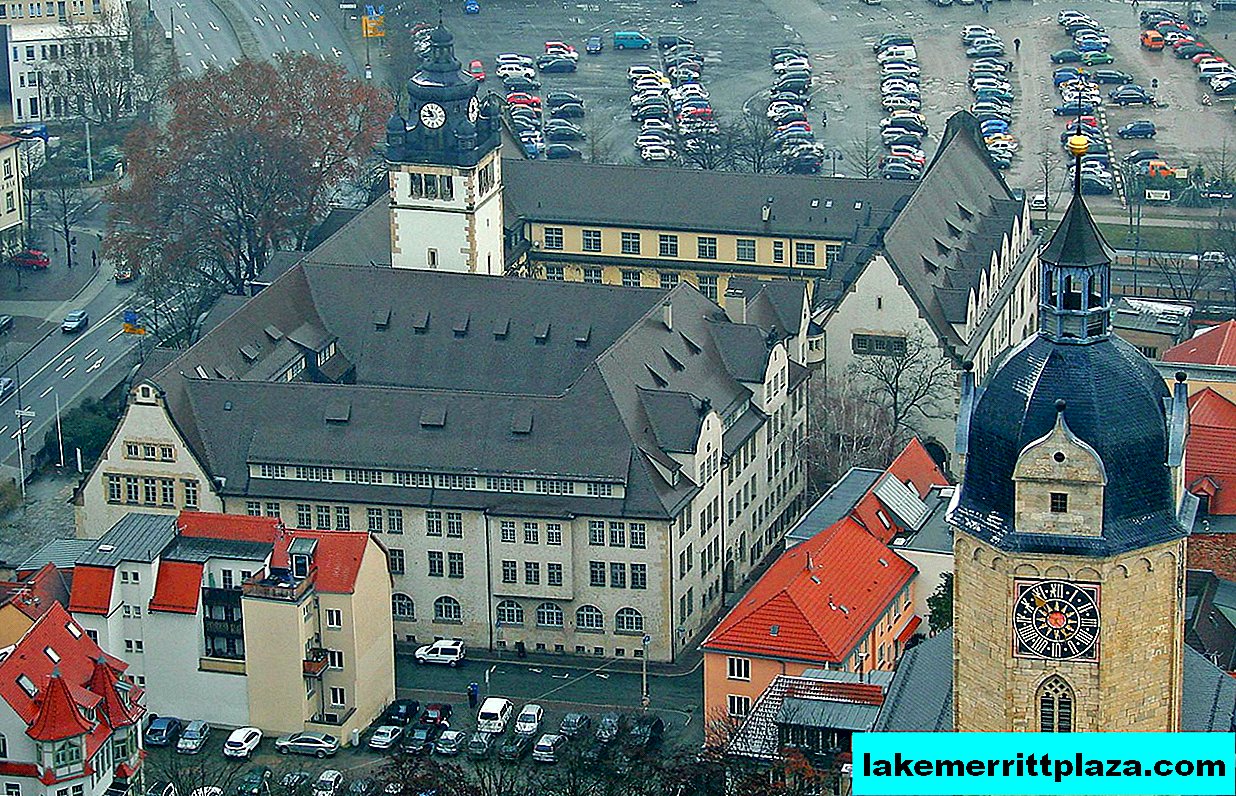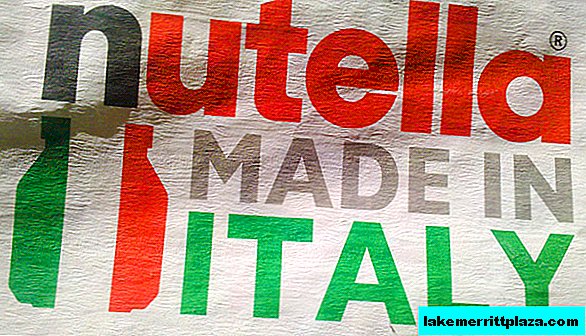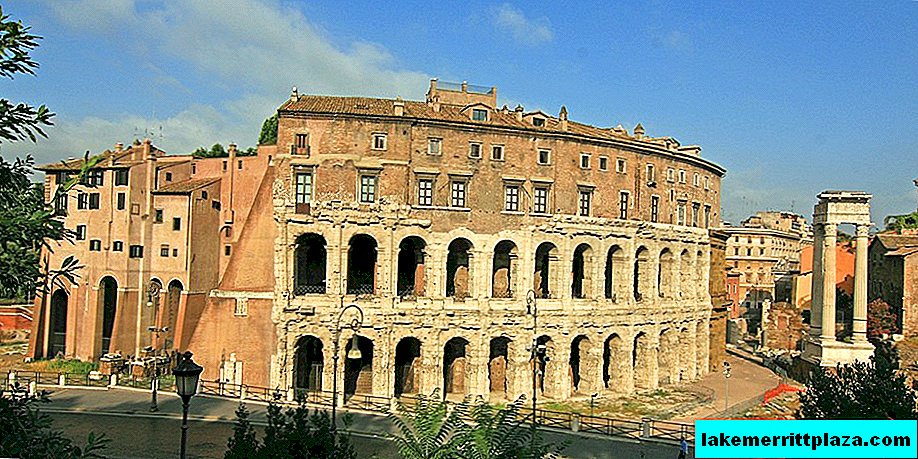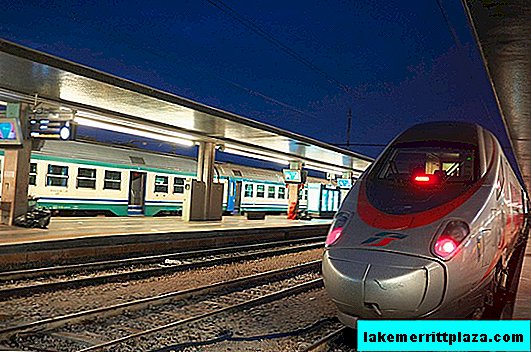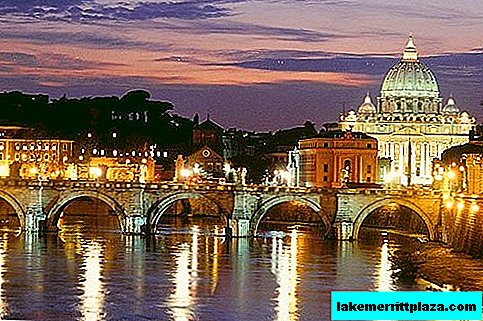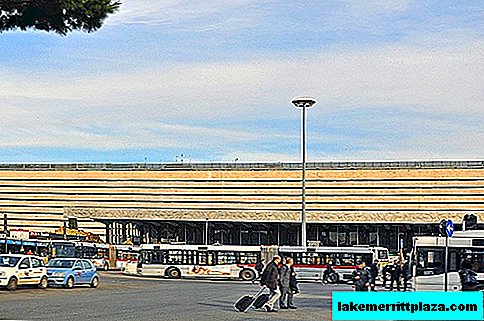Tourism and travel - this is exactly what the expression “Better to see once than hear a hundred times” is most applicable. Cognitive trips to other countries not only broaden their horizons, but also help to destroy some erroneous judgments and stereotypes.

German sketches
Thank you very much for the travel stories sent to me by e-mail: [email protected].
Today Alexey Batuev will talk about Germany.
Tourism and travel - this is exactly what the expression “Better to see once than hear a hundred times” is most applicable. Cognitive trips to other countries not only broaden their horizons, but also help to destroy some erroneous judgments and stereotypes that, under the influence of various reasons, may develop for each individual person.
Two of my last trips with my wife Vera passed just under the sign of getting rid of stereotypes. About the first of them I wrote a report "Knight's Rhodes". The second report you are reading now. I called him
German sketches
Prologue. To Germany on the wings of a dream
The dream to visit Germany began a long time ago. Its implementation was hindered by several reasons. Firstly, some fear of independent travel. Secondly, the erroneous idea that such a trip for us, people with fairly modest financial capabilities, can be very costly. And finally, thirdly, I was confused by the difficulty of obtaining a German visa. The first reason was eliminated after two years ago in Prague we successfully completed the entire excursion program that we planned without assistance. The second reason disappeared after a meticulous study of prices on hotel booking sites and airline tickets. It turned out that when booking in advance (at least 3-4 months before the trip) prices do not bite at all. The third reason was helped by the Greeks, who in the autumn of last year gave us six-month Schengen visas for a trip to Rhodes.
Since our visas were valid until March 28, 2014, when we returned from Greece in October, we immediately began to plan a trip to Germany. Initially, it was decided to go to Munich, but then the plans were adjusted. The fact is that our good friends living in Germany, having learned about our plans, invited us to visit, taking all the care of our accommodation, meals and organization of the excursion program. Thus, the vector of our journey shifted from Bavaria to North Rhine-Westphalia, i.e. from south to northwest of Germany. I will say in advance that we did not regret it at all.
In mid-December, they bought airline tickets for the Lufthansa airline via the Internet for the Moscow-Dusseldorf-Moscow route with a very convenient time for return flights.

At Dusseldorf Airport

At Dusseldorf Airport
We flew there on March 4 at 17-50 with an arrival in Dusseldorf at 18-10 (it was very convenient for our friends who met us at the airport). The return flight was
March 14 at 10-50 with an arrival in Moscow at 17-00.
Round-trip tickets cost 12 thousand rubles for two. For the same price, it was possible to get Transaero airline tickets for the Perm-Moscow-Perm route, however we were afraid that due to a possible flight delay, we might be late for the plane to Dusseldorf. Therefore, we went by train from Perm to Moscow and back. Railway tickets cost us in
7 thousand rubles for two (round-trip). Total, our travel expenses, including other small transportation costs, amounted to 20 thousand rubles for two. If the process of making major decisions had not been delayed, in November air tickets could have been bought at 1.5 thousand rubles cheaper. Given that living cost us nothing, the budget of our trip was more than modest.
The only thing that bothered us before the start was the thought that we could have problems at the passport control in Dusseldorf due to the fact that we did not have a hotel reservation or an invitation. We only had the address and telephone numbers of the receiving party, i.e. our friends. Fortunately, the German border guards did not have any questions for us.
For 9 full days of stay in Germany (I don’t think the day of arrival and day of departure) we got acquainted with the cities of Siegen and Kreuztal (we lived there) and their picturesque surroundings, visited the very nice spa town of Bad Berleburg, went to Cologne, Koblenz, Bonn and Marburg and, during a two-day bus tour, admired the Benelux capitals - Luxembourg, Brussels and Amsterdam, the impressions of which I may set out in a separate report.
However, first things first.
Part I. Siegerland
Our hospitable friends - Tatyana and Erich, live in the small quiet town of Kreuztal, about 70 kilometers east of Cologne.
Kreuztal is a typical German outback.

One of the streets of Kreuztal

Kreuztal houses
Residential buildings, as seen in the photo, are small and low, not higher than three floors. The number of apartments in the houses is also not large. A garage and a large utility room, in other words, a pantry, are necessarily provided for each apartment in the house. Needless to say, the entrances to houses and the streets are very clean.
And in this small town there are such little cute little cars.

Car on Kreuztal street
In Kreuztal there are neither large enterprises, nor any historical sights. True, the entrance to one of the old abandoned mines has been preserved not far from the house of our friends.

Entrance to the old mine
Nearby are mining trolleys.

Mining Trolleys
This suggests that for a long time, starting from the early Middle Ages, the most common profession in these parts was the miner profession.
Near Kreuztal is the administrative center of the district - the city of Siegen, with which Kreuztal actually merged into one urban agglomeration. There is a traffic light on one of Siegen's streets (or Kreuztal?), And the locals know that everything that is located on one side of the traffic light is called Siegen, and everything that is located on the other side is Kreuztal. And vice versa, depending on which side you look.
Siegen, unlike Kreuztal, is a rather large (a little over 100 thousand inhabitants) industrial city with enterprises mainly of metallurgical profile, as well as a cultural and educational center. The city has a university, a theater, several museums. Quite a lot of churches, with a variety of architectural styles. Artists from all over the world, including guest performers from Russia, perform in the large Siegerlandhalle concert hall.
Officially, the area centered on Siegen is called Siegen-Wittgenstein. Locals call their land Siegerland.
And now let's digress a bit and talk in more detail about what I casually mentioned at the beginning of my story - the destruction of stereotypes.
If, by the will of fate, I ended up not in Siegerland, but in some other region, I would probably have lived in captivity of my misconceptions about Germany until the end of my life. Before the trip, my brain worked straightforwardly and using standard general information from the fields of geography, politics, sociology, etc. etc., built approximately the following logical chain:
1. In Germany, with the exception of the south, where the Bavarian Alps are located, there are no large mountain ranges. So, there, basically, a flat landscape.
2. In Germany, the Green Party has a very big influence, and a significant part of the population is concerned about the protection of nature. This means that wildlife there is rapidly declining and needs emergency protection.
3. In Germany, a high population density and, moreover, the population is growing due to legal and illegal migrants. This means that Germany is a heavily urbanized country, the city in it is stepping on a village and absorbing more and more remaining land free from building up.
The conclusion suggests itself: Germany is a predominantly flat country, urbanized and wildlife in it is very uncomfortable.
And no! The epigraph to this part of the report could be the words from the song by Vladimir Vysotsky: "No, guys, it's not like that. It's not like that, guys!"
The basis of the Siegerland landscape is many high hills, or, if you like, low mountains 300-400 meters high with narrow intermountain valleys. Here is a very characteristic photo.

Germany. City Siegen
The city of Kreuztal is located in two intersecting valleys, from this its name ("Kreuz" - cross, "tal" - valley). On the roads passing through Siegerland and its neighboring areas, there are quite a lot of bridges ("talbrücke") on which autobahns fly from hill to hill. The hills are usually covered with forest, and the population lives in the valleys. Here is a photo that, at first glance, seems to depict the city outskirts.

Germany. City Siegen
In fact, the city simply goes around this hill and continues in the next valley.
Siegerland has a lot of forests. In whatever direction you go, everywhere along the roads a forest stretches. Moreover, mainly coniferous. Everything, as we have, in the Urals.

Siegerland landscape
There are no birch groves. Deciduous trees here are mainly of other species. I saw one birch, and even that was not in the forest, but in the very center of Koblenz. There is another significant difference between the German forests and ours. When in Germany you look at a forest from afar, it seems that the taiga is the same as ours.

Here they are, the expanses of Siegerland

Germany. Or Russia?
You drive closer, but no. As they say, Fedot, but not that one. Our Russian nature is wild, the forest grows according to God's will, and propagates by self-sowing. The German forest, for the most part, is man-made. All trees stand in straight, slender rows, because they are planted by man. No stumps, no snags, no dead wood, no windbreak. It happens that individual plots go under cutting. But after this, the owner of the plot is obliged to clean it and plant new trees. There are, of course, areas where forest life follows the laws of nature, but the main array is nevertheless monitored and protected. The green party is on the alert!
Even the "green" pay much attention to the use of alternative, environmentally friendly forms of energy - wind and solar energy. Everywhere you look, numerous windmills are visible

Windmills
and solar panels.

House with solar panels
At present, in Germany, electricity generated by wind and sun makes up a rather significant share in the total volume.
From all of the above it follows: Germany is a country with a very diverse nature and landscape, nobody offends nature here, and there is quite enough land free of urban development, which is confirmed by low-rise residential development in small and medium-sized cities.
So, we sorted out the stereotypes, not leaving them stone to stone. Now let's talk about the main city of Siegerland.
The city of Siegen stands on the river Sieg, from which, in fact, its name came from. "Zig" in translation from German into Russian means "victory". Alternatively, the name of the river arose after someone had ever won some significant victory on its banks. Scientists, however, do not agree with this and believe that the name comes from the Celtic word, meaning "swampy, marshy." And in fact, before the arrival of the ancient Germans in these lands, the center of Europe was inhabited by Celtic tribes, and there were more than enough bogs in those ancient times in Europe.
Siegen has an ancient rich history. In the most studied historical era, the city was the center of the independent Nassau-Siegen Principality. As the name suggests, it was ruled by one of the branches of the ancient princely family of Nassau. The most famous representative of this glorious family was Prince William of Orange, the recognized leader of the Dutch revolution of the 16th century. The counts of Nassau very successfully bred and multiplied, almost in the same way as the Rurikovichs in Russia. Numerous lines and branches of this kind had possessions in many countries of Europe, and, above all, of course, in Germany. One representative of the dynasty was lucky to become emperor of the Holy Roman Empire of the German nation, the second - the king of Great Britain. Currently, representatives of this princely house occupy thrones in the Netherlands and Luxembourg.
Little has been preserved from Siegen's historical heritage, since during the Second World War the city was 80 percent destroyed by allied air raids. Siegen, in particular, and Westphalia as a whole were bombed with particular fierceness, since Westphalia was then, as, however, and now is located, most of the economic potential of Germany. In this federal state is located one of the largest in Europe Ruhr coal basin and the famous Krupp factories. Westphalia for Germany is the same as the Urals is for Russia - the supporting edge of the state. Many enterprises were hidden in forests during the war. In cities, people fled to bomb shelters. The bomb shelters, in turn, were masked by such structures.

Germany. Siegen. WWII bomb shelter
They were built entirely of concrete and were stylized as residential buildings. Beneath them were bomb shelters. The authors of this project hoped that the enemy, aimed at industrial and military facilities, would not bomb residential buildings and people hiding under them in bomb shelters would survive. Several similar buildings have been preserved in Siegen.
Despite the terrifying consequences of the bombing, something remains for lovers of antiquities in the city. These are two castles - Upper and Lower. We were not in the Lower Castle. On its territory there are now various services of the local administration. At one time there was a local prison. The Upper Castle houses the Siegerland Museum. We headed there.
On the way to the Upper Castle on Marktplatz, we examined two more sights of the city. The first is the church of St. Nicholas.

Church of St. Nicholas in Siegen
The church is architecturally noteworthy. It is the only church north of the Alps that has a hexagonal base. And she also has a gilded crown with a diameter of about 2.5 meters on the spire. Because of this, Siegen is sometimes called the "city of the crown."
The second attraction is a century-old tree planted in 1898 by one of the great people of Germany - Chancellor Otto von Bismarck, who, together with Kaiser Wilhelm I, united Germany into a single state.

Tree planted by Bismarck
A memorial sign is installed at the base of the tree.

Commemorative sign
From the Marktplatz square to the Upper Castle is very close.

Entrance to the territory of the Upper Castle

Upper castle
An exposition is located on the ground floor of the castle and on its underground level, which tells about what the local population has long been doing. And it was mainly engaged in mining, the production of steel and products from it. Having descended to the underground level, you can inspect the branched mine adits with the rails for trolleys laid in them. There is no photo of the museum’s internal exhibits, since photography is prohibited in the museum.
On the upper floors of the castle is an art gallery. There are mainly portraits of representatives of the princely house of Nassau on display. There are portraits of the most famous of Nassau - Wilhelm the Silent, Count of Nassau-Dillenburg, Prince of Orange. This is all one and the same person. As they said in one of the most famous Soviet films: "Georgy Ivanovich, aka Gosh, aka Goga, aka Horus ..." and so on and so forth. In a word, "Der Grosser Koenig und Great Knese."
In addition to princely portraits, the exposition contains works by one of the most famous Flemish artists - Peter Paul Rubens. About how the name of Rubens is associated with Siegen, I will talk a little later.
In addition to paintings in the museum, you can find household items from the former owners of the castle.
After exploring the museum, from the observation platforms located next to the castle, you can admire the panorama of the city.

View of Siegen from Upper Castle
From here you can see another famous Siegen church - the church of St. Michael.

Church of St. Michael in Siegen
A small park is set next to the castle.

Upper Castle Park
Among the other interesting objects in the park there is such a sculpture.

Sculpture "Three mothers of one child"
Conventionally, it can be called "Three mothers of one child." The sculpture symbolizes the dispute of three cities - Siegen, Cologne and Antwerp - about the birthplace of the artist Peter Paul Rubens. This debate continued until at the beginning of the twentieth century a document was found in one of the Dutch archives that unequivocally testified that Rubens was born in Siegen. The story that preceded his birth is very curious.
Rubens's father was one of the most respected citizens of the Flemish city of Antwerp and was repeatedly elected to the city foremen. Due to the terrorist policies that the Spanish governor of the Netherlands, Duke of Alba, pursued against the Protestants, Jan Rubens was forced to leave for Germany, to the city of Cologne. Since he was a well-known lawyer, in Cologne he was involved in the divorce proceedings of Prince William of Orange and his wife Anna Saxon. Gradually, the business relationship between Jan Rubens and Anna Saxon grew into a love affair. The consequence of this was that the ill-fated lawyer was first sent to prison (indeed, do not sit in his sled), and then sent to Siegen, which in those days was obviously considered a "bear angle". In Siegen, the most famous of the children of Jan Rubens was born - Peter Paul. In 1955, the city of Siegen instituted the Rubens Prize, which is awarded once every five years to artists who have dedicated themselves to European art.
During our stay in Germany (from March 4 to 14), the weather was extremely warm. Only one day, exactly the one when we walked along Siegen, was cloudy. On all other days there was clear sunny weather. One day the temperature even reached +26. In the 2013-2014 season, there was practically no winter in Germany. By the time of our arrival, the leaves on the trees had not yet blossomed, but the trees themselves, bushes and lawns were covered with flowers. Global warming, however.

Blooming tree

Germany. Early March

Lawn in the Upper Castle Park
After completing the inspection of the castle and its environs, we walked around the center of Siegen. It’s very nice to walk in any German city, you can always see something interesting. For example, here are such funny turtles in a children's sandbox.

Tatyana, Vera and a funny turtle named Natasha
On one of the streets they met a local “shepherd,” something similar to Darth Vader from the Hollywood movie star Wars. He grazed a whole herd of cows.

We and the Siegen Darth Vader

The cow is good, not peppy

Here is the calf

A dog helps to graze a herd
On this, perhaps, about Siegen and Siegerland can be completed. In the next part I will talk about those picturesque places that are located next to them.
German sketches. Part II
German sketches. Part III
German sketches. Part iv
German sketches. Part v
German sketches. Part VI
German sketches. Part VII
German sketches. Part VIII
German sketches. Part IX
German sketches. Part x
How do I save on hotels?
Everything is very simple - look not only at the booking. I prefer the search engine RoomGuru. He is looking for discounts at the same time on Booking and on 70 other booking sites.

